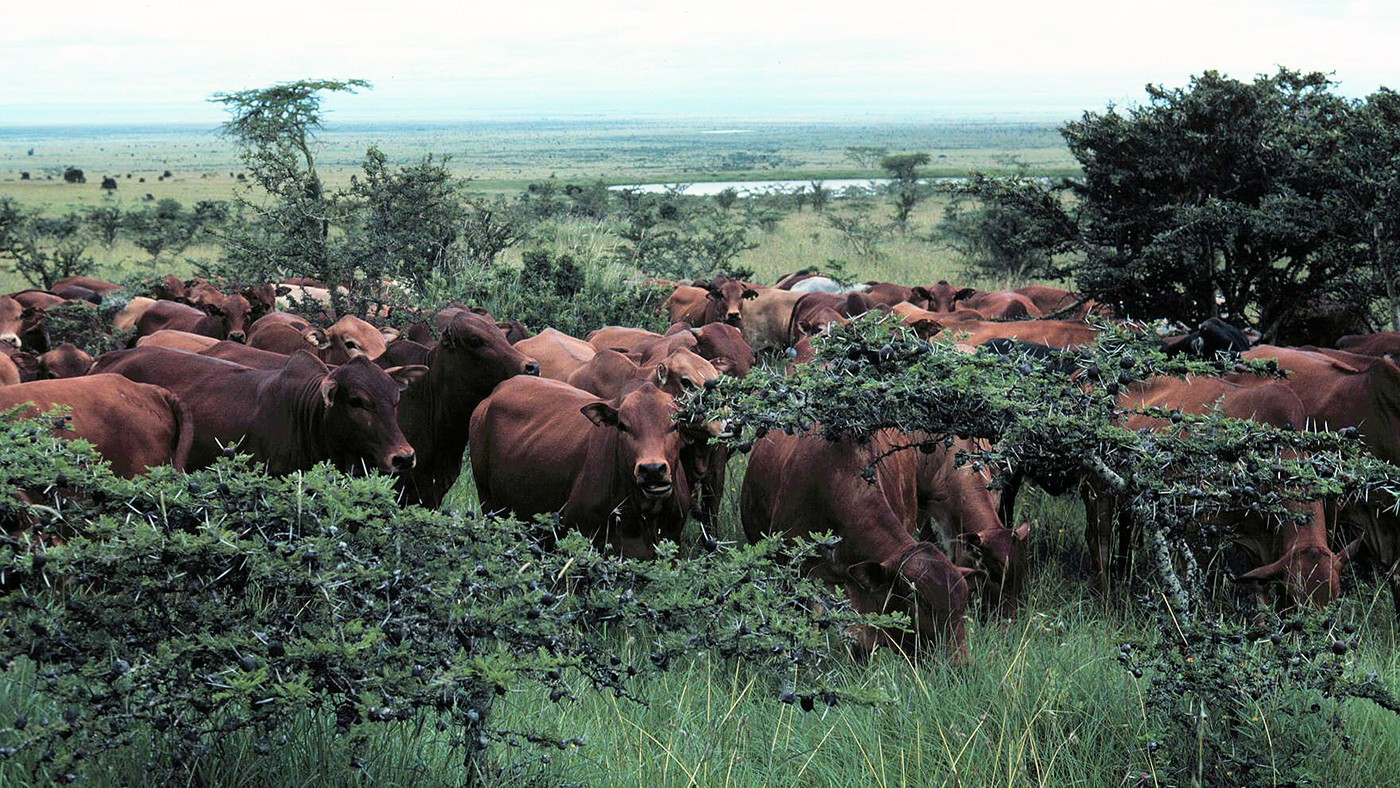What Dung Fungi Can Tell Us About Past Climate and Economies in East Africa
Not many people spend much time thinking about the humble dung fungus. But perhaps they should!

C+S 2021 students are blogging about topics that interest them for Applications in Climate and Society, a core spring class.
Not many people spend much time thinking about the humble dung fungus. But perhaps they should! For some climate scientists, it’s a key that can help unlock information about the past climate—and also economic history.
Instrumental records of temperature, rainfall, and other aspects of the climate are usually no older than the 19th century. If we want to understand what the climate was like before then, we need to turn to other sources of evidence. Because these sources are proxies—or stand-ins—for aspects of the climate and each has limitations, it’s useful to have multiple kinds of evidence. In East Africa, written records about the past are generally also not older than the 19th century. Researchers look to other kinds of evidence to learn about how people lived in earlier centuries, including from oral traditions. Dung fungi spores are a proxy that can add to that history, telling us both about variations in rainfall and about the history of cattle herding.
Fungi, Climate, Herbivores
Climate scientists have different records that they use as proxies for temperature and precipitation. These include oxygen isotopes in ice sheets and the amounts of dust in sediments at the bottom of oceans. Another record is fungal spores in lake sediments, which can be used as a measure of temperature and moisture. Because fungi only grow in warm, moist conditions, their presence in sediment tells us those kinds of conditions must have prevailed when the fungi were growing.
Some kinds of fungi can tell us even more. These are called obligate coprophilous fungi, meaning that they only grow in animal dung. One of these is the fungus Sporormiella, which is a good proxy for the presence of herbivores, whether wild animals like buffalo or domesticated cattle. When scientists see much higher amounts of Sporormiella than they expect from natural variation in wild animal populations, that suggests the presence of large herds of cattle associated with pastoralism. This can tell us that people in the area took advantage of a wetter climate to expand their herds or even experiment with cattle herding for the first time.
Kenya’s Rift Valley
Lake Bogoria in central Kenya dried up completely during an extremely dry period more than 1,300 years ago. Since then, it has always had water in it, even though the level has varied dramatically. By taking cores from the sediment at the bottom of the lake, scientists can track how the amount of water changed over time and how the amount of dung fungi spores in the sediment changed. The first Sporormiella in Bogoria’s sediment appeared around the 12th century. Researchers think it was likely growing on wild herbivore dung from animals enjoying the wet conditions at that time.
From around the mid-17th century, there started to be more Sporormiella in the sediment than expected from natural variation, indicating people were keeping cattle around the lake. After a dry period with no Sporormiella in the early 19th century, the amount increased significantly suggesting a dramatic increase in the number of cattle as people moved back into the area and expanded herds in a time of reliable rains. Oral traditions from the area suggest a similar conclusion. People abandoned pastoralism and sought refuge with agricultural communities during prolonged droughts. When the rains returned, some chose to constitute new communities that centered on pastoralism and returned to the area around Lake Bogoria.
Dung fungi can point to moments when the climate was drier or wetter and give us evidence of people’s responses—whether abandoning pastoralism or expanding it. What they can’t tell us, however, is where people went or what they did when they moved away in response to drought. For that, we need to turn to other kinds of evidence.
Dung fungi don’t only do the useful work of decomposing mounds of animal dung, they can also tell us when the climate changed between warm and wet vs. cool and dry. And, they offer us a window into the economies of people living in East Africa over past centuries and millennia.
